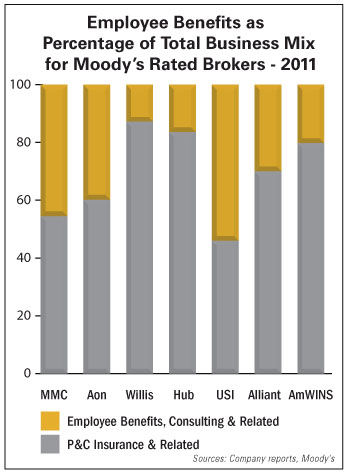 Arthur J. Gallagher’s move to offer a private-insurance-exchange platform is a smart strategy for leveraging the health-care-reform law into new solutions for employee-benefit clients—but smaller brokers may find it difficult to duplicate such an offering, says one industry watcher.
Arthur J. Gallagher’s move to offer a private-insurance-exchange platform is a smart strategy for leveraging the health-care-reform law into new solutions for employee-benefit clients—but smaller brokers may find it difficult to duplicate such an offering, says one industry watcher.
Gallagher recently announced it would partner with Liazon Corp., a provider of private insurance exchanges, to offer clients the Bright Choices Exchange—an online benefits store for employers to select health, dental, vision, life and disability coverage from various providers. Gallagher’s exchange will serve as an alternative to the state exchanges that will offer coverage under the Patient Protection and Affordable Care Act (PPACA).
The expectation is that small and midsize employers (200 employees or fewer) will be attracted to the private exchange as they seek to control their health-care expenses through defined contributions. Under a defined-contribution plan, employers give employees a set amount of funds to purchase insurance on their own.
Recommended For You
Want to continue reading?
Become a Free PropertyCasualty360 Digital Reader
Your access to unlimited PropertyCasualty360 content isn’t changing.
Once you are an ALM digital member, you’ll receive:
- Breaking insurance news and analysis, on-site and via our newsletters and custom alerts
- Weekly Insurance Speak podcast featuring exclusive interviews with industry leaders
- Educational webcasts, white papers, and ebooks from industry thought leaders
- Critical converage of the employee benefits and financial advisory markets on our other ALM sites, BenefitsPRO and ThinkAdvisor
Already have an account? Sign In Now
© Touchpoint Markets, All Rights Reserved. Request academic re-use from www.copyright.com. All other uses, submit a request to [email protected]. For more inforrmation visit Asset & Logo Licensing.







